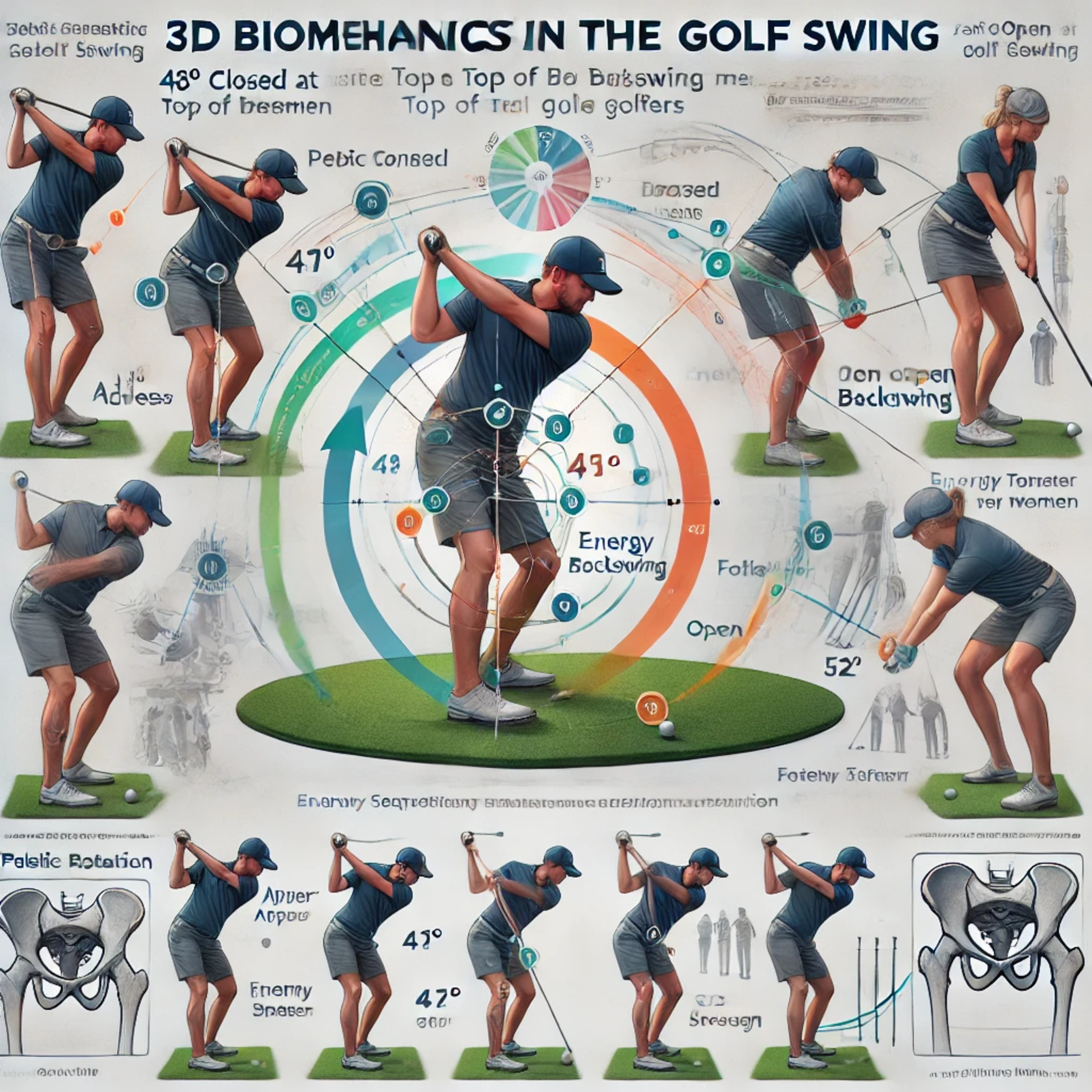#133 The Pelvis Turn in the Golf Swing
- Author
- Golf247.eu
- Published
- Tue 11 Feb 2025
- Episode Link
- https://podcasters.spotify.com/pod/show/puttin-pro/episodes/133-The-Pelvis-Turn-in-the-Golf-Swing-e2ua3iq
The Podcast examine the significance of pelvic rotation in the golf swing. They analyze the pelvis rotation angles at different phases of the swing in both male and female professional players, highlighting differences in movement patterns and speeds. The data emphasize the impact of pelvic rotation on power transfer, swing consistency, and injury prevention. A 3D motion analysis app is mentioned as a tool for optimizing the golf swing. Overall, the sources provide detailed insights into the biomechanics of the golf swing and stress the central role of pelvic rotation in performance.
Pelvic rotation plays a crucial role in energy transfer during the golf swing. Here are the key points explaining how pelvic rotation influences energy transfer:
Energy Transfer: Well-timed pelvic rotation enables efficient energy transfer from the lower body to the upper body, increasing swing power. The pelvis movement serves as a foundation for the rest of the body, allowing greater pelvic rotation to contribute to a larger shoulder and arm rotation.
Skull Spring Concept: In the context of the "Skull Spring" concept, where the body stores and releases elastic energy through coordinated movements, pelvic rotation is essential for maximizing energy return during the swing.
Timing is Key: Pelvic rotation initiates the downswing before the club reaches the highest point of the backswing. This early movement creates stretch (X-Factor), which enhances power. The maximum pelvic rotation in the backswing occurs before the club reaches its peak.
Kinematic Sequence: Just before impact, the pelvis accelerates and then decelerates, forming part of the kinematic sequence. Pelvic rotation must be open at impact to ensure the correct sequence of the kinetic chain.
Tour Data: Data from tour players show that LPGA Tour players tend to have slightly higher pelvic rotation speeds due to their greater flexibility.
Pelvic rotation acts as the engine for energy transfer in the golf swing. Proper and well-timed pelvic movement is crucial for generating power and improving swing consistency. The rotation differs between male and female professionals at various swing phases, with some significant differences in angles and speed.
Pelvic Rotation and Energy Transfer in the Golf SwingPelvic Rotation Differences Between Male and Female Professionals
Key Differences:
Address Position: Both men and women have a slightly open pelvis at address. Men typically have an angle of about2° open, while women have about1° open. "Open" means the pelvis is slightly rotated toward the target.
Top of Backswing: During the backswing, the pelvis rotates away from the target into a "closed" position. Men reach a maximum rotation ofapproximately 48° closed, while women achievearound 51° closed. The larger rotation in women is often attributed to their greater flexibility. Notably, the maximum pelvic rotation occurs before the club reaches the top of the backswing.
Impact: At impact, the pelvis is open toward the target. Men typically have an angle ofabout 41° open, while women haveabout 52° open. The greater pelvic opening in women at impact is part of the proper sequencing of the kinetic chain.
Follow-Through Maximum: At the end of the follow-through, men reach a maximum pelvic angle ofaround 109° open, while women achieveapproximately 114° open. Again, this highlights the greater flexibility and range of motion in women.
Rotation Speed: Women on the LPGA Tour generally have aslightly higher maximum pelvic rotation speed (510°/s) compared to men on the PGA Tour(484°/s). This is also attributed to women's increased flexibility.
Conclusion
In all phases of the golf swing, femaleprofessionals tend to have slightly larger pelvic rotation angles and higherrotation speeds than male professionals. These differences are likely due tovariations in flexibility and body mechanics.
